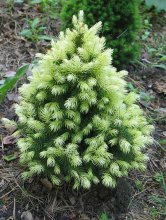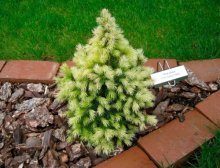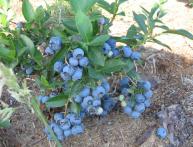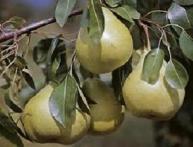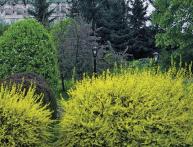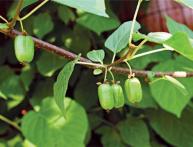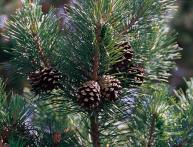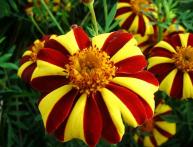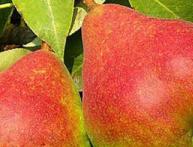Description of Canadian spruce, proper care and replanting rules
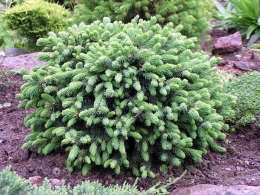
Canadian spruce belongs to the category of dwarf tree species. Due to the attractive appearance of this plant, it can be used to decorate a variety of landscape designs. This ornamental plant can be used not only on the sites of private houses, but also for the design of parks, squares, etc.
Content:
Description of the plant
This plant is characterized by the presence of a dense, cone-shaped, narrow crown, which provides it with excellent external characteristics. Canadian spruce reaches an average height of one and a half meters. In rare cases, this plant can grow up to 4 meters. Spruce has a thin and soft pine needles, which is characterized by a blue-green color.
The root system of this plant is located very close to the surface, which requires the most careful care for it. In one year, Canadian spruce can grow 3-4 centimeters. Such growth is observed within 10-15 years after planting. Then it slows down.
The plant is characterized by drought resistance and winter hardiness, which allows it to be fully grown in the climatic conditions of our country. If Canadian spruce is provided with favorable conditions, it can live for about three hundred years. In landscape design, gray spruce can be used as a single plant or in a group.Thanks to the universal size of the tree, it can even be planted in flower beds.
Reproduction of blue spruce
This plant is truly unique, since its propagation can be carried out in the following ways:
- Seedlings
- Seeds
- Cuttings
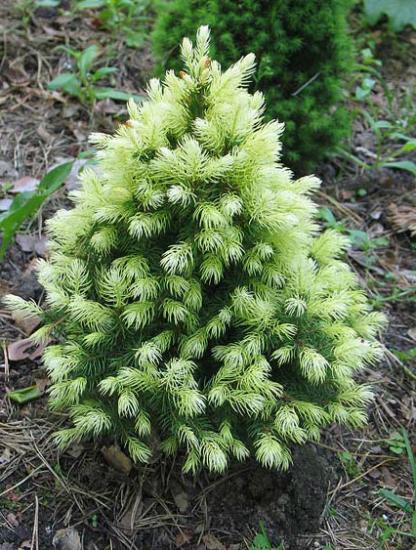
The longest process of growing spruce is the one that involves the use of seeds. Propagating Canadian spruce using cuttings will be quite difficult for a gardener. If propagation is carried out by seedlings, then for this purpose the lower mature branch, 10 centimeters long, is selected.
Before planting the cutting, its lower part is treated with growth stimulants. The planting depth is 2-3 centimeters. To plant a dwarf spruce, you need to use an ordinary soil mixture, which can be purchased at the store. After planting a plant, regardless of the chosen method, it is necessary to water it constantly and fully.
Transplanting a plant
Canadian spruce is a unique plant, which can be transplanted at any period of its growth. The most favorable time for this is when the plant is young. If the transplant is carried out with an open root system, then it should be done in the autumn or spring. When transplanting Canadian spruce in the summer, it is necessary that the root system be together with a ball of earth. Planting should be done in cloudy weather.
After transplanting the Canadian spruce to a new location, the optimal humidity level is maintained. Transplanted trees must be protected from direct sunlight. Waterlogged the soil has a very bad effect on the survival of the plant. Therefore, it is necessary to carry out frequent but moderate watering.If the soil is very wet, roots will die.
Planting should be done in areas characterized by low groundwater levels. If you have not found such a place to plant Canadian spruce, then you need to make drainage. The plant will take root in the shortest possible time if the air humidity is high and precipitation is rare. To ensure the most beautiful shade of needles, it is necessary to plant the plant close to garden species.
Features of care
Canadian spruce is characterized by low maintenance, but in order for it to fully grow and develop, it must be provided with care. Spruce is characterized by frost resistance. It can fully withstand temperatures from -15 to +5 degrees. If in the region in winter the temperature drops below this mark, then it is necessary to wrap the plant for the winter.
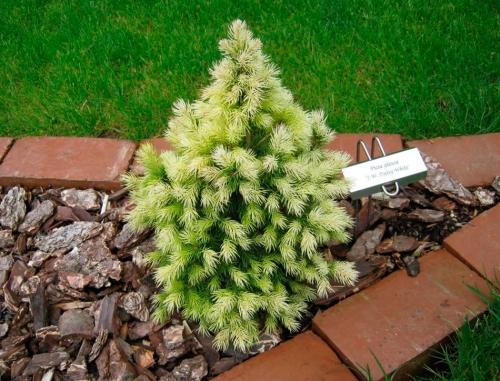
Planting should be done in semi-shaded areas and moisture-absorbing loamy soils. If the soil on your Canadian spruce site is not suitable, then mineral fertilizer or manure can be used to fertilize it. The use of mineral fertilizers must be carried out in accordance with the instructions. If you use manure, then you need to scatter from 10 to 15 kilograms of it per square meter of land. fertilizers.
If the plant is planted on sandy soil, then loam and turf are added to it. In order for the Canadian spruce to have an attractive shape, it is necessary to regularly trim its crown. If there is drought in the summer, the plant needs to be watered using irrigation. A few days after this, weeding is carried out.
This action is carried out as carefully as possible, since deep loosening can damage the roots of the Canadian spruce.
In autumn, the soil is mulched. Peat compost is used for this purpose. In order to maintain the required level of moisture, it is necessary that the thickness of the mulch be 5 centimeters. In early spring, the branches of the plant are covered with breathable material. This will limit the possibility of sunburn in the spring.
Canadian spruce, like other conifers, can suffer from pests and diseases. Most often, the plant is exposed to such a dangerous fungal disease as tracheomecosis. This disease prevents the roots from delivering nutrients to the plant. This disease cannot be treated. In some cases, rust appears on spruce branches. The disease is treated with insecticides.
The plant is affected by this pest, like a bark beetle. An effective remedy at the initial stage of infection is the insecticide BI-58. Caring for Canadian spruce is quite simple. Even an inexperienced gardener can complete all the procedures. If the care and propagation of the plant is done correctly, then you will be able to create a truly original design for your garden plot.
Canadian spruce on video:

